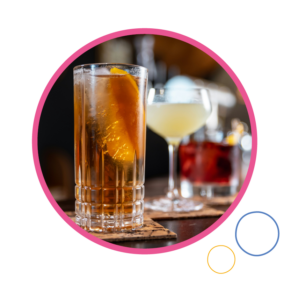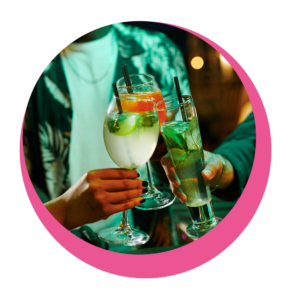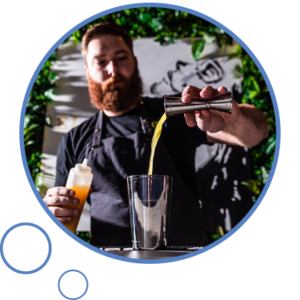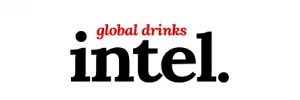Recent data from CGA by NielsenIQ’s OPUS research highlights that the popularity of the aperitivo occasion across a number of key European markets offer significant revenue potential for brands, operators, and beverage suppliers.
Aperitif and Aperitivo
To fully seize this opportunity and shape future strategies, it’s crucial for suppliers and operators to deeply understand how consumers perceive the aperitivo drinking occasion. Indeed, Europeans do love the aperitif moment: in Germany and Italy, 40% of On Premise patrons report consuming aperitifs almost every time or every time they visit bars, pubs, and restaurants, while an impressive 56% in France share the same sentiment.
Europeans consume a diverse array of beverages during their visits. For instance, in Italy, up to a third of On Premise drinkers opt for sparkling wine as their aperitif, especially during the festive season. Meanwhile, in France, beer – particularly craft beer and local French labels – holds significant sway, being chosen by approximately 15% and 20% of consumers respectively. However, the standout observation that emerges from the research is the striking popularity of cocktails, chosen by over a quarter of consumers in both Italy and France. 
In Italy, the undisputed champion among aperitif cocktails is the Spritz, with Aperol-based variations leading the way. These Spritzes are favoured by over half of consumers. But a substantial 36% of individuals still appreciate the more bitter and robust profile of the Campari Spritz. Despite people’s loyalty to these two well-established branded expressions, suppliers and operators still have the opportunity to introduce alternative brands by looking at new bitters and liqueurs that align with consumer preferences as suitable mixers for sparkling wine.
Before dinner, and beyond
CGA’s OPUS data reveals that a significant portion of consumers extend the aperitivo occasion beyond the traditional early or late evening time frame. The data presents excellent opportunities for On Premise businesses, as it signifies an extended window to engage with consumers who appreciate the aperitif experience. In particular, findings indicate that nearly 15% of On Premise users consider lunchtime and mid-afternoon and dinner times as potential aperitivo hours across the European region.
 When it comes to venues, aperitivo is typically enjoyed in more informal settings. In Italy, bars are the favoured venues for over half of drinkers, followed by pubs, chosen by nearly 40% of consumers, and cafés with 32%. Meanwhile, in Germany, cafés take the lead with almost 48% preference, followed by bars (39%) and casual dining restaurants (32%) .
When it comes to venues, aperitivo is typically enjoyed in more informal settings. In Italy, bars are the favoured venues for over half of drinkers, followed by pubs, chosen by nearly 40% of consumers, and cafés with 32%. Meanwhile, in Germany, cafés take the lead with almost 48% preference, followed by bars (39%) and casual dining restaurants (32%) .
Another crucial aspect that brands, suppliers, and operators need to pay attention to is the frequency of consumer engagement with the aperitivo occasion, particularly as recent findings indicate a shift from weekly visits towards monthly visits. Despite this change however, the frequency of engagement is still remarkably high across Europe, meaning that aperitivo should remain a key focus for
the On Premise sector in the months ahead.
Approximately 40% of Italian On Premise drinkers, and 28% of users in France and Germany engage with aperitifs at least once a week. It’s also worth highlighting that a significant portion of the remaining share comprises those who indulge in aperitifs once or twice a month, accounting for 36% in Italy, 35% in France, and 37.5% in Germany. Notably, a small yet noteworthy percentage (2.6% in Italy, 6.5% in France, and 4.2% in Germany) engage with aperitifs on a daily basis, a remarkable frequency that underscores the consistent and widespread appeal of this drinking occasion.
Opportunities for the occasion and category
These figures clearly underscore the ample opportunities the aperitivo moment offers for the On Premise sector. But how can such opportunities be

effectively seized? To shed light on this, insights from CGA’s REACH survey delineates eating and drinking out behaviours across European markets. The research reveals a consistent trend: consumers across Europe place a high level of trust in staff when it comes to selecting their drinks. A significant majority – over three out of four On Premise users in France and Italy, and 58% in Germany – express a preference for being educated about the drinks they are served by knowledgeable bartenders. Conversely, a mere 4% in Italy, 6% in France, and 13% in Germany do not value this guidance. This highlights the importance of staff expertise in shaping the customer experience and driving sales, and suggests that brands, suppliers, and operators can effectively capitalise on the aperitivo opportunity by prioritising staff training and knowledge enhancement.
Indeed, among individuals keen on learning more about drinks while out, over a third express a preference for receiving such education directly from bartenders or waiting staff. Moreover, an additional 21% in Italy, 17% in Germany, and 14% in France indicate a desire to be educated by specialists or experts in the field. Delving into more granular data further solidifies the pivotal role played by well-trained staff capable of effective communication and engagement with On Premise visitors.
A notable percentage of consumers (28% in Italy, 19% in Germany, and 30% in France) actively seek recommendations from bartenders when making decisions about their drink choices. Similarly, a significant proportion (ranging from 14% to as much as 25% across these markets) inquire with waiting staff or bartenders to gather information about the available drink options. These figures are of paramount importance for businesses, as they highlight the potential to leverage the influential power of bartenders as an efficient and indispensable tool in capturing the popularity of the broader cocktails category, especially within the aperitivo moment.
 However, there are additional avenues for players in the sector to influence consumer choices at the bar. For instance, nearly half of On Premise users in Italy, and over 40% in Germany, acquire more information about drinks by perusing additional details on the menu. Moreover, approximately 34% in Germany and 24% in France express a preference for selecting drinks based on the descriptions provided on the menu. Ensuring that menus incorporate comprehensive information about a brand can enhance its visibility and, consequently, increase the likelihood of purchase from the consumer.
However, there are additional avenues for players in the sector to influence consumer choices at the bar. For instance, nearly half of On Premise users in Italy, and over 40% in Germany, acquire more information about drinks by perusing additional details on the menu. Moreover, approximately 34% in Germany and 24% in France express a preference for selecting drinks based on the descriptions provided on the menu. Ensuring that menus incorporate comprehensive information about a brand can enhance its visibility and, consequently, increase the likelihood of purchase from the consumer.
These insights, all drawn from both OPUS and REACH studies within the markets, underscore the tremendous potential that the aperitif moment presents for the On Premise sector in key European countries. To maximise on it however, businesses must accurately grasp the nuances of how the occasion is interpreted across these markets, and when, where, and how consumers engage with it. Informing strategies by using concrete and up-to-date data will be crucial in navigating and capitalising on this opportunity in the months ahead.

CGA’s OPUS research and REACH surveys offer a comprehensive suite of tools for On Premise businesses to make informed decisions and drive success. The former provides insights into category, channel, occasion, and brand questions, aiding in sales and marketing strategy optimisation in various On Premise markets. Simultaneously, REACH illuminates eating and drinking behaviours, offering valuable multi-market insights and benchmarking for targeted consumer outreach. To learn more about CGA’s capabilities across the European On Premise market, visit www.cgastrategy.com and email Julien Veyron – Client Solutions Director at julien.veyron@nielseniq.com.
Originally published in Global Drinks Intel Magazine




